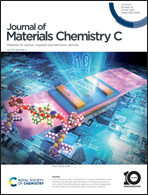Shape memory polymer-based thermal-responsive circuit switches
Abstract
Accidents and disasters caused by abnormally high temperatures, such as fire accidents and spontaneous combustion phenomenons have frequently hit the headlines in recent years. Those enormous losses led by uncontrollable fires have inspired worldwide interest in the design of smart fire-alarming materials and sensors. Based on different working mechanisms, they are designed to detect abnormal temperature changes and provide early fire warnings. Among them, shape memory polymers (SMPs) and their multifunctional composites are emerging as one of the attractive choices for temperature detectors by virtue of their thermal stimuli-responsive ability. Combining with conductive material, SMPs are formulated as circuit switches that can convert the thermal signals into electrical signals. Benefiting from their rapid shape change in response to temperature variation, SMP-based switches can turn on or turn off the circuits in a short time so as to trigger fire alarming systems in time. Although a number of examples of SMP-based switches have been published, there is no review that comprehensively summarises the progress made in this intriguing research area. This article highlights some representative examples of SMP-based switches, including their working mechanisms, preparation methods, response temperature, response time, and amplitude of resistance variation.

- This article is part of the themed collection: Journal of Materials Chemistry C Recent Review Articles


 Please wait while we load your content...
Please wait while we load your content...